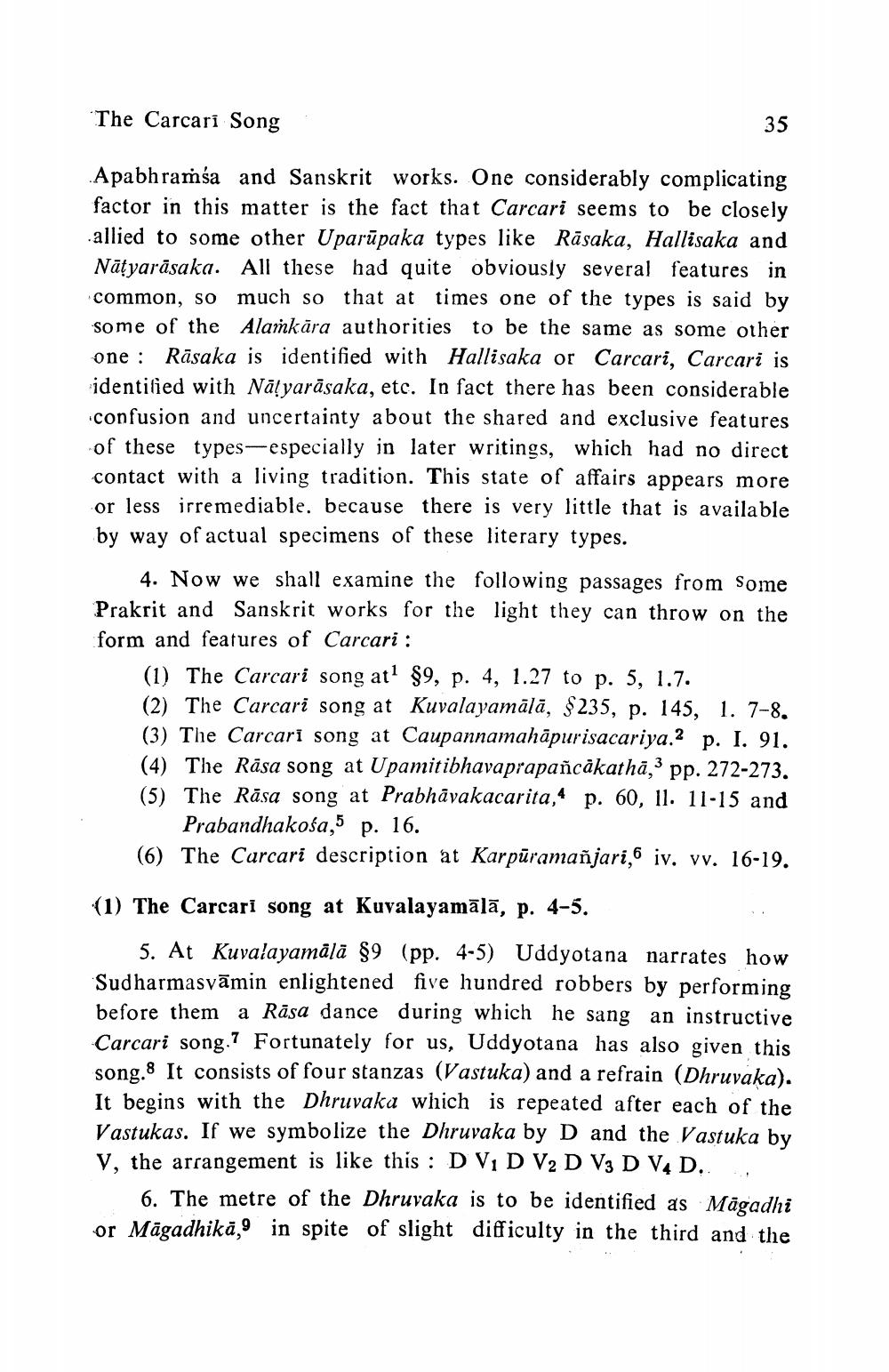________________
The Carcari Song
Apabhraṁśa and Sanskrit works. One considerably complicating factor in this matter is the fact that Carcari seems to be closely allied to some other Uparupaka types like Rāsaka, Hallisaka and Nāṭyarāsaka. All these had quite obviously several features in common, so much so that at times one of the types is said by some of the Alamkara authorities to be the same as some other one: Rāsaka is identified with Hallisaka or Carcari, Carcari is identified with Natyarāsaka, etc. In fact there has been considerable confusion and uncertainty about the shared and exclusive features of these types-especially in later writings, which had no direct contact with a living tradition. This state of affairs appears more or less irremediable. because there is very little that is available by way of actual specimens of these literary types.
35
4. Now we shall examine the following passages from Some Prakrit and Sanskrit works for the light they can throw on the form and features of Carcari:
(1) The Carcari song at1 §9, p. 4, 1.27 to p. 5, 1.7.
(2) The Carcari song at Kuvalayamālā, $235, p. 145, 1. 7-8. (3) The Carcari song at Caupannamahāpurisacariya.2 p. I. 91. (4) The Rasa song at Upamitibhavaprapañcākatha,3 pp. 272-273. (5) The Rasa song at Prabhavakacarita, p. 60, 11. 11-15 and Prabandhakosa,5 p. 16.
(6) The Carcari description at Karpūramañjari,6 iv. vv. 16-19.
(1) The Carcari song at Kuvalayamālā, p. 4-5.
5. At Kuvalayamālā §9 (pp. 4-5) Uddyotana narrates how Sudharmasvamin enlightened five hundred robbers by performing before them a Rasa dance during which he sang an instructive Carcari song. Fortunately for us, Uddyotana has also given this song. It consists of four stanzas (Vastuka) and a refrain (Dhruvaka). It begins with the Dhruvaka which is repeated after each of the Vastukas. If we symbolize the Dhruvaka by D and the Vastuka by V, the arrangement is like this: D V1 D V2 D V3 D V4 D..
6. The metre of the Dhruvaka is to be identified as Mägadhi or Magadhikā, in spite of slight difficulty in the third and the




